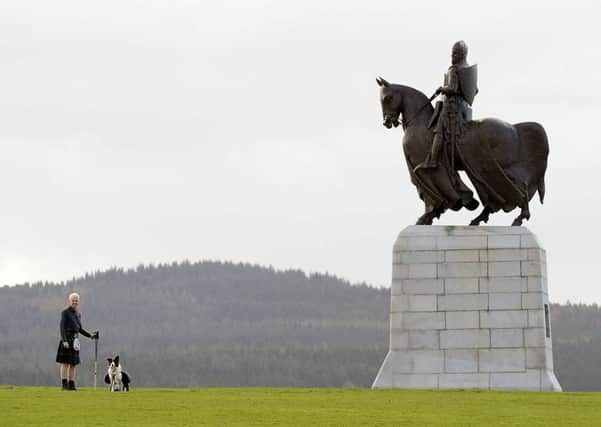OTD 1274: Robert the Bruce, King of Scots, is born


He led the Scots to victory over the English at Bannockburn in 1314, with the win immortalised in the anthem Flower of Scotland, and secured recognition from Rome as the King of an independent Scotland.
But Bruce was also murderous and sly who cleared his path to power without mercy, some say.
Advertisement
Hide AdRobert was born on July 11, 1274 and raised at Turnberry Castle in Ayrshire.
He was distantly related to the Scottish royal family with his grandfather, Robert de Brus, 5th Lord of Annandale, one of the leading contenders to the throne left empty by the death of Margaret of Norway.
This bid for Bruce rule was rejected in favour of the rival rights of John Balliol in 1292 but the family’s royal aspirations remained.
The Bruce family held land across the south west of Scotland and England, with Robert the Bruce, as Earl of Carrick, working to protect his territories across two warring kingdoms.
As a result, he led resistance against Edward I, who ruled Scotland as a province of England, and later submitted to the King in order to protect his family’s interests.
He raids Lanarkshire with the English in 1297, before joining William Wallace’s uprising and then surrendering to the English King at Irvine, according to accounts.
Advertisement
Hide AdAfter being pardoned for his treachery, Bruce is back with the King in Galloway in 1298 but by the next year he is attacking his castle at Lochmaben near Annandale.
Following the defeat of William Wallace at Falkirk in 1298, Bruce and John Comyn succeed the guardianship of Scotland.
Advertisement
Hide AdComyn was both Bruce’s cousin his greatest rival to the throne
The 1306 murder of Comyn - whose body was found following a meeting with Bruce at a church in Dumfries - has been described as the greatest political murders of all time.
The meeting started quietly by then Bruce slashed Comyn in the chest before leaving the church, with Bruce’s men reportedly going in to finish the job.
Depending on whose view you subscribe to, Comyn’s death was either pre-meditated murder or a reaction to Comyn’s ‘betrayal’ that he would not unite with Bruce against Edward I.
Whatever the intention, Bruce was outlawed by the King and excommunicated by the Pope giving the killing in a Holy place - and then crowned king at Scone Abbey on March 27 1306.
The price of power was high. His wife and three daughters were imprisoned and three of his brothers executed, with Bruce going into exile on an island off Antrim.
Advertisement
Hide AdHe returned to Scotland and embarked on a new phase in the war against the English which peaked in victory at the Battle of Bannockburn in June 1314, where he defeated a much larger English army under Edward II.
In 1320, the Scottish earls, barons and the ‘community of the realm’ sent a letter to Pope John XXII declaring that Robert was their rightful monarch.
Advertisement
Hide AdThis ‘Declaration of Arbroath’ asserted the antiquity of the Scottish people and their monarchy and is considered by some to be the founding document of Scotland as a nation.
Some commentators have highlighted how Robert the Bruce was motivated merely by the acquisition of land and feudal power.
“It is true that no monarch after Bruce had to fight so hard to secure the throne and the kingdom but it is also true that he did so because that is what warlords do, “ wrote Andy Wightman, author and now MSP, in the Poor Had Lawyers.
“Bruce was a member of a fractious elite class descended from Norman immigrants and his fight was a fight for feudal power, land and money. To place it any higher in the moral order of thing is naive,” he added.
Robert the Bruce died on June 7 1329 and was buried at Dunfermline. His heart - which had been due to go to the Holy Land at his request - was returned to Scotland after its custodian, Sir James Douglas, was killed in Spain. It is buried in Melrose Abbey.
